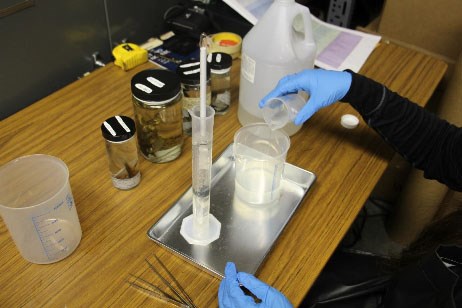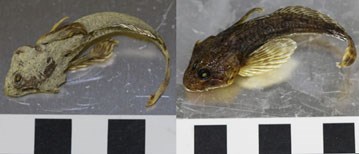
Photo by Martin Hobmeier
During the summer of 2017, Martin Hobmeier and Jennifer Murphy, interns at Isle Royale National Park and Pictured Rocks National Lakeshore, researched methods to improve the condition of specimens in museum collections.
Martin and Jennifer chose to follow a new, simplified, and economical method (first outlined in a paper by Randy Singer (2014) and based on previous work by John Simmons) for rehydrating the specimens. The procedure involved bringing the desiccated specimens back into a hydrated state very gently and gradually, beginning with a lengthy exposure to 100% humidity, followed by submersion in 100% distilled water for two to ten days. The concentration of ethanol was then increased by 10-20% every few days until the solution reached 70% ethanol. The entire process took months to complete. By the end of the rehydration process, the mean quality score for all specimens increased from 5 (very poor) to 16 (fair).

Photo by Jenny Murphy
Last updated: September 15, 2018
